MXA MOTOCROSS SCHOOL: HOW TO DANCE WITH THE LOW-SIDE AND LIVE TO TELL THE TALE
The conditions that precipitate a low-side are as obvious as a pink hippopotamus in a health spa, but we never see them coming. There are only two ways to low-side in a turn: (1) A washed out front tire. (2) An unrecoverable rear-wheel slide.
The low-side is the good cop to the high-side’s bad cop, but you don’t necessarily want to do either one in the middle of a race. Luckily, low-sides are more common than high-sides. They are also much easier to identify before they happen. Why we choose to ignore the signs when they are staring us square in the goggles is a mystery. The low-side, and the inevitable stalled engine that follows, is the fastest way a professional motocross racer can go from Hurricane Hannah to Homer Simpson. Yet, it happens to the best of us—always in front of onlookers, and always on the racing line.
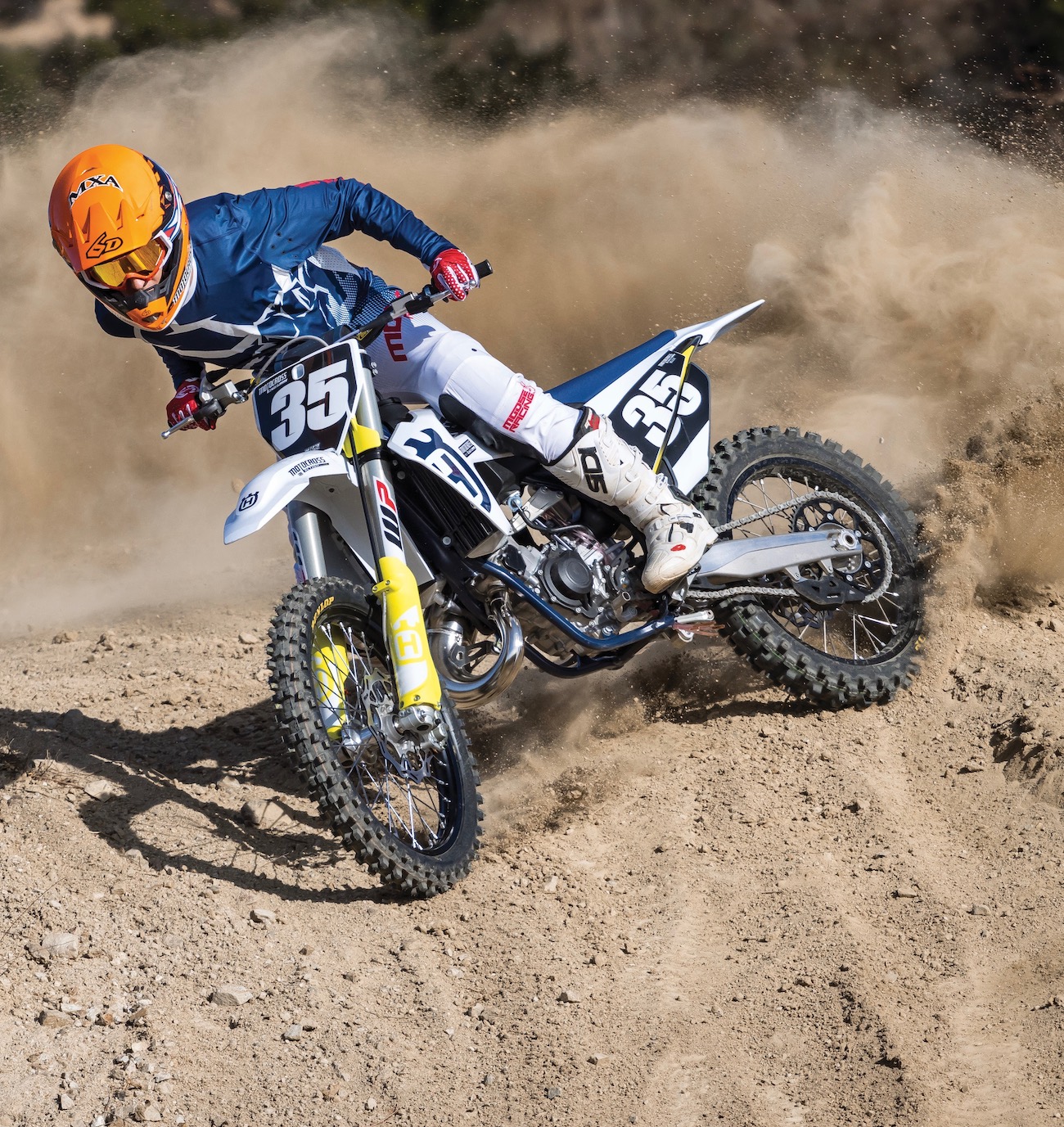 Nothing in motocross is as impressive as pitching your bike into a corner with the rear wheel stepped out—but it is akin to dancing with danger.
Nothing in motocross is as impressive as pitching your bike into a corner with the rear wheel stepped out—but it is akin to dancing with danger.
ANATOMY OF A LOW-SIDE
Low-sides are most often caused by misjudging the correct lean angle for a corner. Lean too much and the rear tire will slide; lean too little and the front tire will push. You can also add over-braking to the low-side list, especially when it comes to pushing the front tire. Last, but not least, on our low-side list of loser moves is ham-fisted throttle twisting. If knowledge is truly power, then understanding how a low-side happens should earn us the power to prevent it from occurring.
WHAT CAUSES A FRONT-WHEEL LOW-SIDE
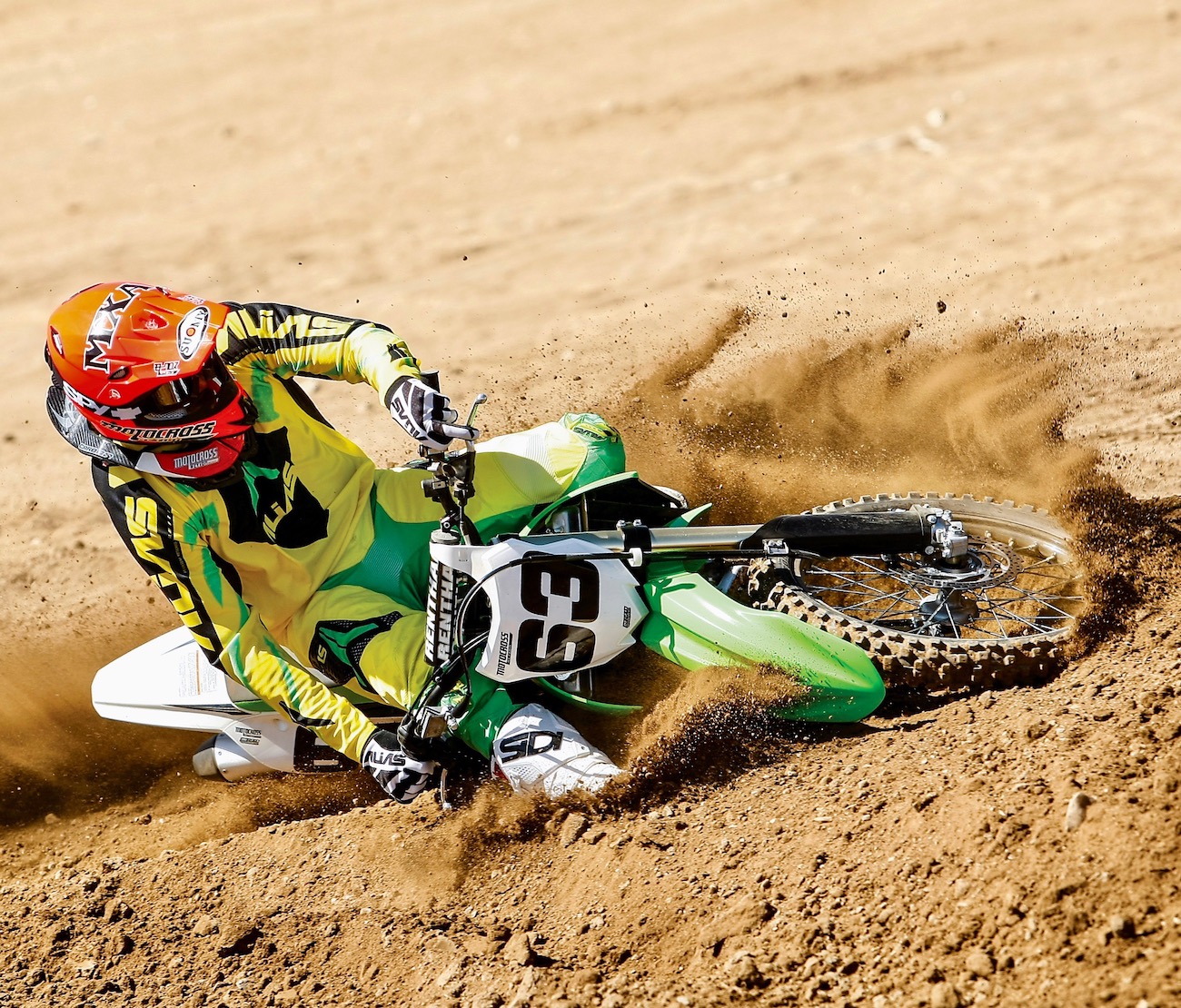 When you turn at the limit your front tire is hard-pressed to produce one additional iota of extra bite.
When you turn at the limit your front tire is hard-pressed to produce one additional iota of extra bite.
When you lean your motorcycle to carve a turn, your wheels arc around an imaginary point perpendicular to the G-forces you are generating. When your tires are aligned in the direction of travel, they produce the most traction. This is the perfect corner. When you fail to lean far enough, the motorcycle turns a wider arc and you must compensate by turning the handlebar to steer around the corner. Suddenly, the front tire must develop enough traction to handle the G-force and, at the same time, counter the extra load caused by the tighter steering radius. Dragging the front brake creates additional cornering forces up front (so does dragging the rear brake, to a smaller extent).
Your motorcycle doesn’t care what creates the additional demand; any time you are cornering to the limits of traction (as every racer should), the front tire is hard-pressed to produce one additional iota of extra bite. Once you exceed the tire’s adhesion limit, the tire slides. When it slides, you panic. Why panic? Because your bike is not turning into the corner; it’s going straight and it’s going down. To compensate, you steer the handlebars farther into the turn, which increases the cornering forces on the already pushing front tire. Voila! The push becomes a low-side. In essence, you slide out.
At this point, you shouldn’t be worrying about crashing—that is a given. Instead, while you are tumbling over the dry clay, direct your thoughts to where you stashed that spare clutch lever, or locate a source of ice to nurse your left knee.
HOW TO SAVE A FRONT-WHEEL LOW-SIDE
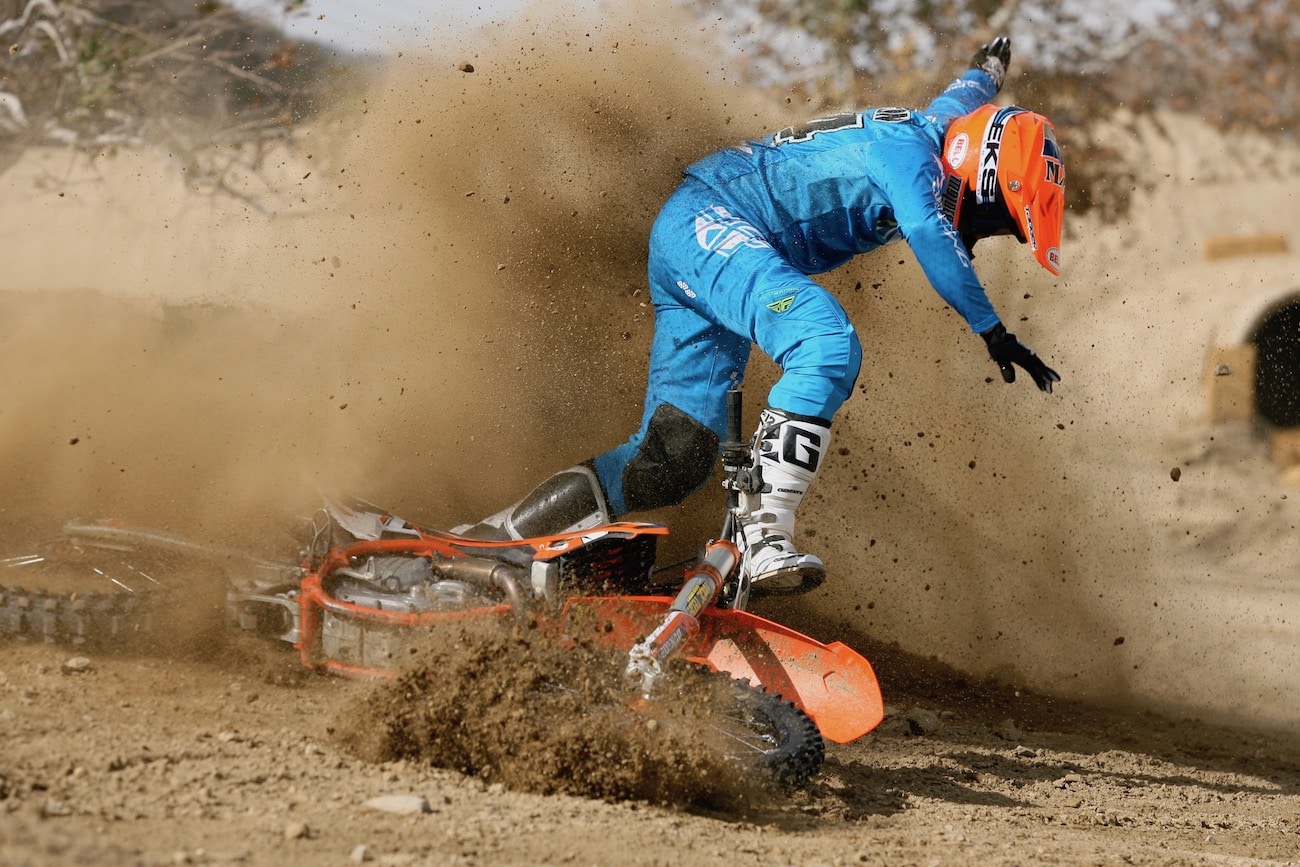 If it’s going down, you aren’t the Captain of the Titanic, you don’t have to go down with it.
If it’s going down, you aren’t the Captain of the Titanic, you don’t have to go down with it.
Once the front tire loses traction and lets go, your bike will drop like a stone. The only way to prevent a low-side in such an advanced state is to plant your foot near the front tire and use it to pole-vault your motorcycle back up to the correct lean angle. This is called “the stomp.” In low-speed situations, the stomp works fairly well. By stomping your foot on the ground, you change the lean angle, lessen the G-forces and prevent the crash.
However, if the corner is flat and fast, there is little chance that stomping on the ground will keep you upright. The only way to save a high-speed push is to get the rear tire sliding. Yes, you stop the front from sliding by making the rear wheel slide. Kismet! To achieve this, you will need to support the weight of the motorcycle as best you can by dragging your boot alongside and gunning the engine with a quick burst of power. If you can get the rear wheel to step out, you will realign the G-forces and go merrily on your way—although not necessarily in the direction you intended. It doesn’t feel right or look pretty, but it’s a bold move that will keep you upright, more or less, and that is always a plus.
There is one tip that can help you avoid the dreaded front- or rear-wheel push before it starts. It’s known as “weighting.” In this case, weighting the outside footpeg will cause the rear tire to hook up on an off-camber surface, while weighting the outside handlebar will keep the front tire from pushing on a slippery surface.
WHAT CAUSES A REAR-WHEEL LOW-SIDE
 A rear-wheel low-side is caused by leaning too much. If you should lose traction while you are at, or slightly above, the proper lean angle the rear wheel will step out.
A rear-wheel low-side is caused by leaning too much. If you should lose traction while you are at, or slightly above, the proper lean angle the rear wheel will step out.
While the classic front-wheel low-side is caused by not leaning enough, the rear-wheel low-side is caused by leaning too much. If you should lose traction while you are at, or slightly above, the proper lean angle for a turn, your motorcycle will simply move toward the outside of the corner until it hooks up again.
When you change direction, the angle of that change and the speed you are traveling create an imaginary angle or “force vector.” As long as your center of gravity and that of the motorcycle’s are balanced at an angle that matches the force vector, you will remain upright and in control.
When your lean angle is perfect, traction is at its peak, because you expose the largest possible area of your rear tire to the dirt. If you lean too far (beyond 45 degrees relative to the surface of the track), you angle your wheel onto the edge of the rear tire, revealing an ever-smaller contact patch. Because the rear tire bears 60 percent of a motocrosser’s weight, even a small loss of traction will cause it to slide big-time.
Few people can react fast enough to catch a rear-wheel low-side. When you lean too far, a rear-wheel slide causes the bike to drop lower, further reducing any hope of regaining traction. This self-perpetuating error is why a rear-end low-side feels like you are “throwing your bike away.” Factor in a misplaced blip of the throttle or a lazy rear braking foot and you will go down faster than dot-com stock.
HOW TO SAVE A REAR-WHEEL SLIDE
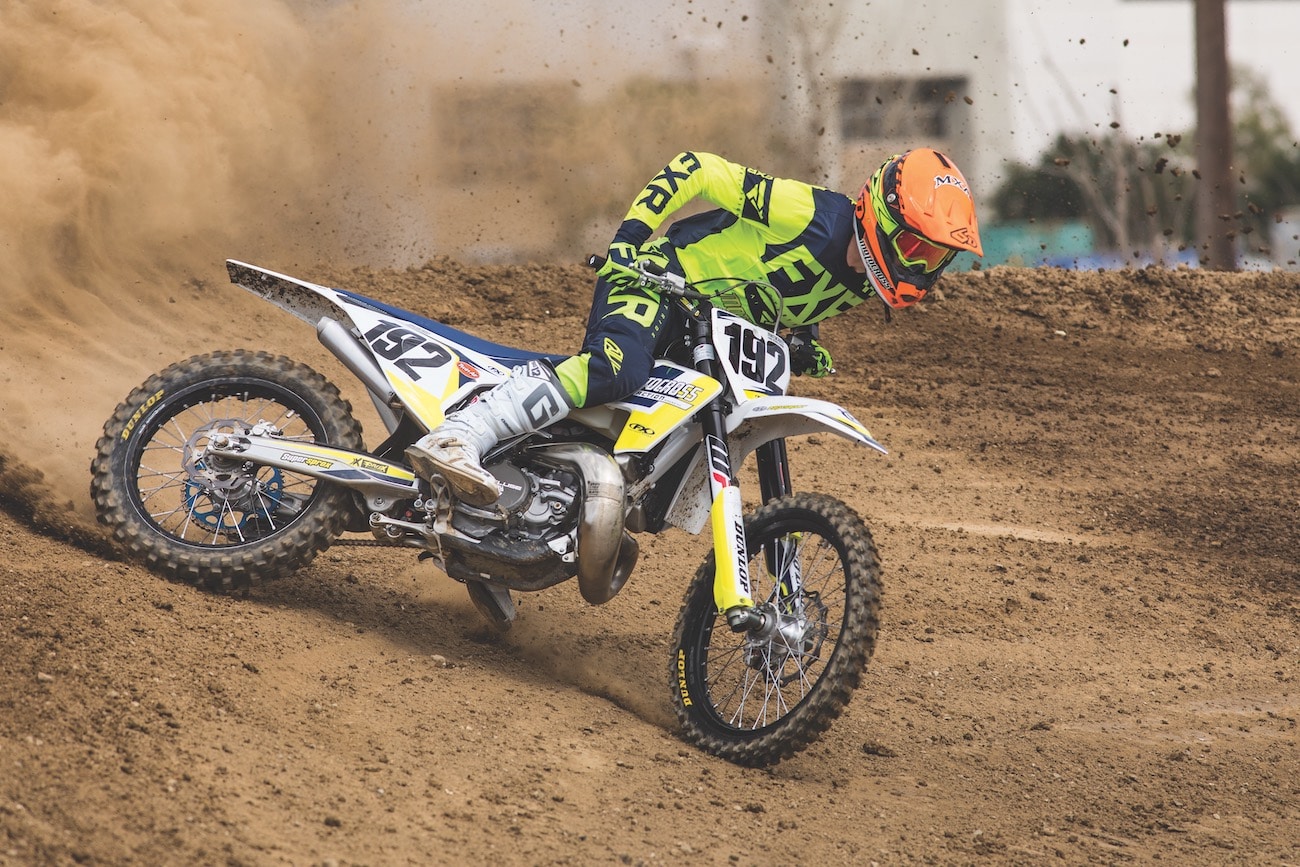 The save yourself from an embarassing rear wheel low-side, you need to countersteer away from the turn and weight the outside peg.
The save yourself from an embarassing rear wheel low-side, you need to countersteer away from the turn and weight the outside peg.
There are times when you are forced to over-bank your motorcycle. Need examples? (1) When you need to lean way over in the transition zone from a flat straight to set up for a steeply banked berm. (2) Everyone gets caught leaning too far when a fast sweeper continues up and over the top of a hill. (3) Off-camber sections add to your existing lean angle without you leaning any further. Very tricky. (4) Who hasn’t dealt with the icy-slick surface that shoots the bike out from under you?
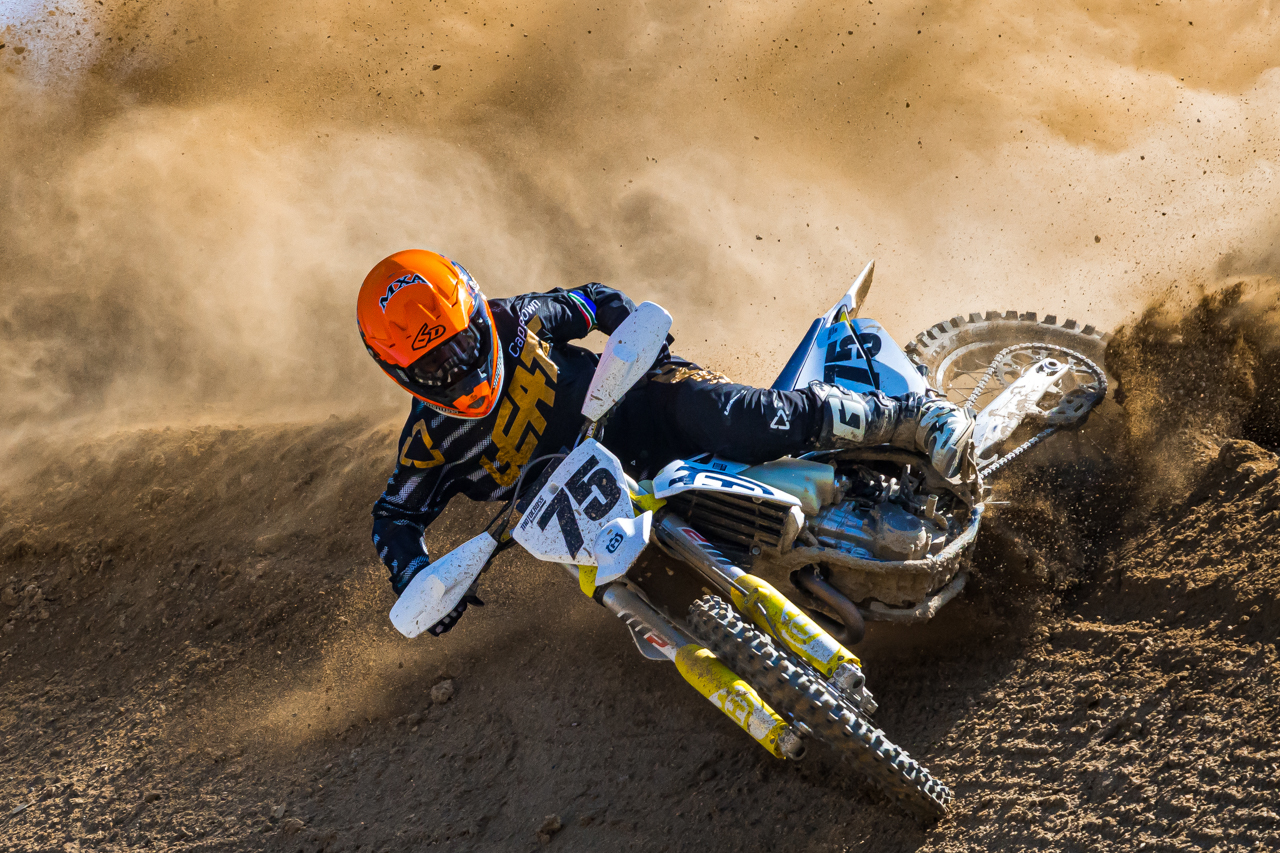 Quick reaction time and rear wheel awareness are key.
Quick reaction time and rear wheel awareness are key.
Learning to read these situations will help you anticipate the threat of a low-side. Recognizing the danger will buy you a heap of reaction time—and the quicker you act, the better your chances of saving a rear-wheel low-side. Here are the major steps to saving a rear-wheel low-side.
(1) Body weight: If you anticipate a low-side situation, or you are forced to lean into a corner excessively, keep your upper body position high and angle the motorcycle low by bending sideways at your hips. Stay centered on the bike and force the motorcycle down with your outer thigh.
(2) Countersteer: The instant you feel the rear tire let loose, countersteer away from the turn. Countersteering will immediately reduce the amount of traction you’ll need to get your rear tire hooked up and get the ground moving below you in a direction that will help straighten out your bike.
(3) Slow down: If you are accelerating out of a turn, back the throttle off about half way. If you are braking, ease off the pedal, but not completely. This takes a bus load of self-control, but it will help make the transition as the slide is arrested and traction is suddenly restored.
(4) Weight the outside peg: Once you have countersteered and released the brake or backed off the throttle, shift your weight to the outside footpeg (you can’t stand your motorcycle up fast enough, but pressing down on the outside peg will shift a huge amount of weight to the outside of the bike).
(5) Hang loose: With all your weight on the outside peg, take your foot off the inside peg and hang it out. Be ready to drag a toe if you need to support some of your weight. As your boot swings around, keep it alongside you, dragging your toe for support in an effort to buy some time for the rear tire to find some bite. If all else fails, you’ll need to plant your boot ahead of the engine and push the bike up.
THE DOWNSIDE OF A LOW-SIDE IS THE HIGH-SIDE

The downside of a low-side is the high-side. When you try to stop a bike from sliding out, you run the risk of flipping it. If you catch your low-side quickly, the weight shift should be enough to save it. But if you are too aggressive (chop the throttle or instantly release the brake), you will risk a high-side.
So, what did we learn? First, corner at the limits and anticipate the worst. Any time you lean past 45 degrees relative to the track, you enter the low-side zone.
Second, motocross bikes can build a berm in any corner where there is loose dirt. Berms are a rider’s best friend, because they give him something to place the tires against, which produces a positive G situation. However, without the berm, a rider has to be comfortable sliding his bike sideways around corners. This takes practice.
Finally, it wouldn’t hurt to find a big, flat and slippery parking lot and practice flat-tracking around it once a month. Go in low and fast until you develop a feel for where the edge of disaster is. With a little practice, you will enjoy getting sideways. Who knows? The next race day, when you are thrown a surprise low-side in front of the grandstands, you might come out of it looking like an AMA Grand National dirt tracker.



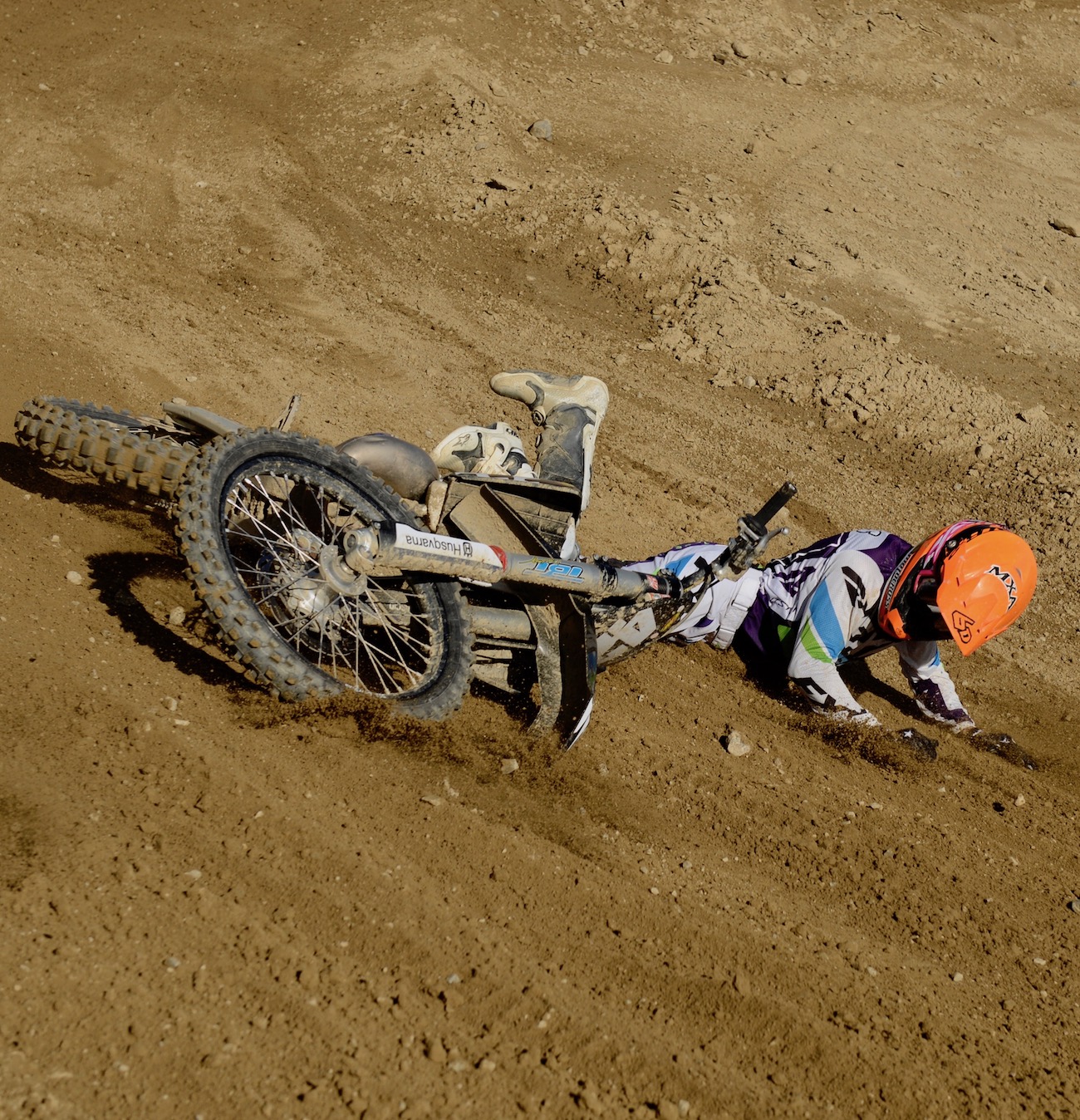




Comments are closed.